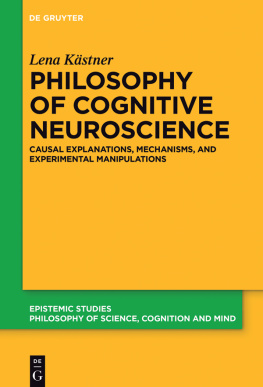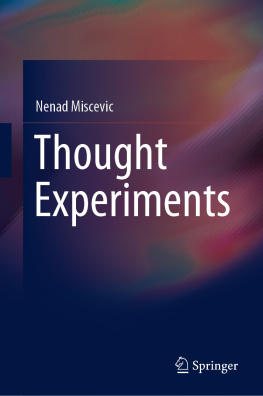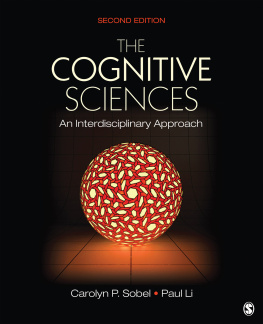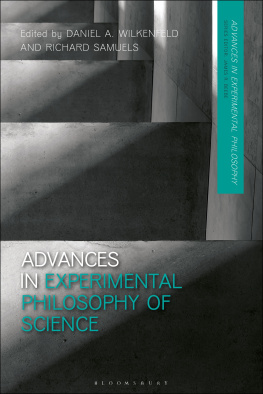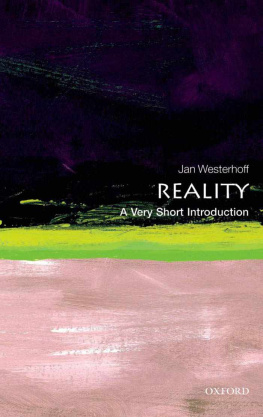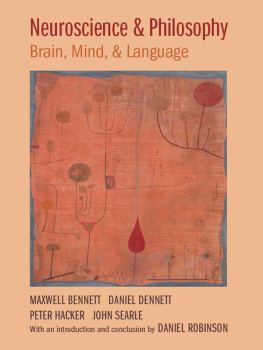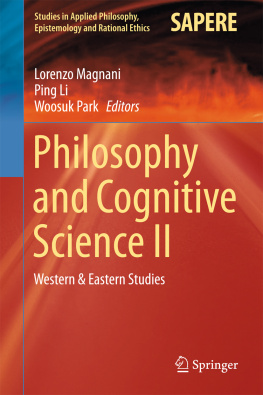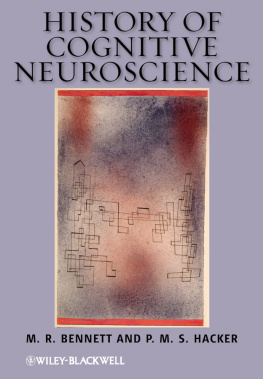Contents
Guide
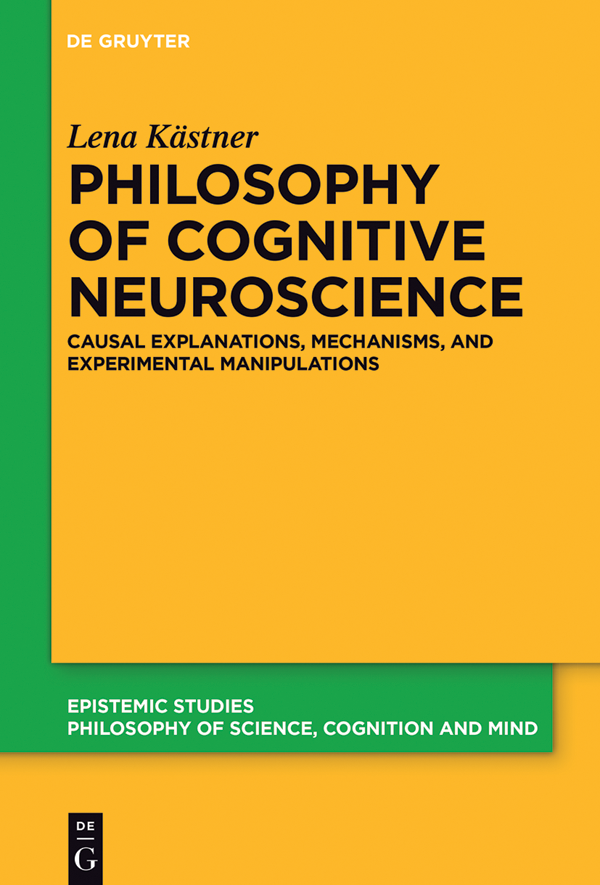
Lena Kstner
Philosophy of Cognitive Neuroscience
Epistemic Studies

Philosophy of Science, Cognition and Mind
Edited by
Michael Esfeld, Stephan Hartmann, Albert Newen
Volume 37
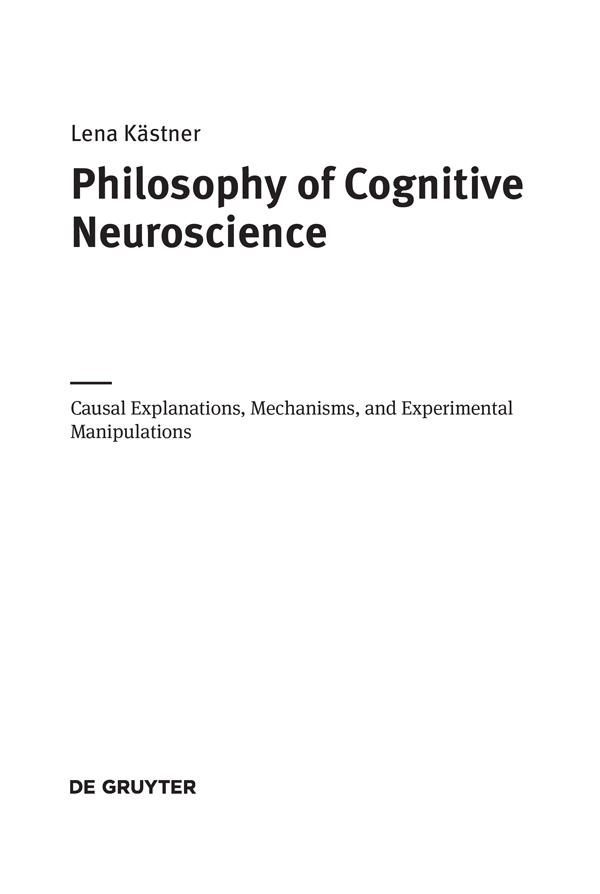
ISBN 978-3-11-052737-7
e-ISBN (PDF) 978-3-11-053094-0
e-ISBN (EPUB) 978-3-11-052920-3
ISSN 2512-5168
Library of Congress Cataloging-in-Publication Data
A CIP catalog record for this book has been applied for at the Library of Congress.
Bibliographic information published by the Deutsche Nationalbibliothek
The Deutsche Nationalbibliothek lists this publication in the Deutsche Nationalbibliografie; detailed bibliographic data are available on the Internet at http://dnb.dnb.de.
2017 Walter de Gruyter GmbH, Berlin/Boston
www.degruyter.com

to my parents
who always supported me
although they never really knew what I was doing
Preface
This book is about how scientists, especially cognitive neuroscientists explain phenomena. Almost six years have passed between drafting its first pages and the final publication. In March 2014, I submitted an earlier version of the manuscript as a PhD dissertation to the Fakultt fr Philosophie und Erziehungswissenschaft at Ruhr-University Bochum, Germany. I defended six it months later and was awarded summa cum laude . For various reasons, the publication process took much longer than anticipated. The core themes of this book, however, continue to take center stage in contemporary philosophy of science.
This is especially true for discussions surrounding mechanistic constitution relations and the use of interventions to uncover them. Mechanistic constitution is a special kind of part-whole relation that obtains between a phenomenon to be explained (the behavior of the mechanism as a whole) and the acting entities in the mechanism implementing the phenomenon in question (see ). Interventions are manipulations of some factor X with respect to some other factor Y that, provided appropriate conditions hold, can be used to detect a causal relation between X and Y . The basic idea is that if we can wiggle Y through wiggling X , we can infer that X causes Y . However, for this reasoning to work it must be possible, at least in principle , to independently manipulate X and Y , viz. wiggle X without also wiggling Y . But if X and Y stand in a part-whole relation this is not the case. Therefore, using interventions to detect mechanistic constitution relations is highly problematic.
Many papers now central in the debate about interventions in mechanisms have already been circulating in the community while I was working on the dissertation in Bochum. For this publication, the references have been updated accordingly and more recent work on the topic has been included in the discussion. This applies especially to ) rather than interventionsare indispensable.
Therefore, a second core topic discussed in this book is which role different kinds of experiments play throughout the discovery process as well as the subsequent construction of scientific explanations based on the discoveries made. I call the branch of philosophy of science concerned with questions of experimentation and the epistemology of scientific experiments philosophy of experimentation . Though the nature of scientific experiments has been discussed by philosophers at least since Francis Bacons Novum Organum (1620), experimentation has not been a dominant topic in philosophical discussions on explanation. Rather, logical positivists have emphasized the formal characteristics of explanation, laws of nature , and deduction . More recently, such views of scientific explanation have been replaced by causal-mechanical accounts. They emphasize that scientific explanations aim to uncover the causal nexus of the world to render observed phenomena (the explananda) intelligible. This is the context in which contemporary mechanistic and interventionist accounts arise. But still, very little is said about where the relevant evidence for scientific explanations comes from.
According to our common contemporary understanding, experimentation is at the heart of scientific practice. Experiments clearly are an indispensable part of scientists activities across a vast range of disciplines. Thus, experiments vary significantly depending on the research area, available tools and methodologies, as well as the concrete research question at hand. Despite (or precisely because of) this variety, scientific experiments enable discoveries, help generate evidence, and eventually fuel scientific explanations. But what exactly are experiments and what do they actually tell us? If we want to truly understand scientific explanations, these are the questions that need answering. As a first step into this direction, I analyze various types of experiments with respect to their designs , what kinds of manipulations they employ, and what research questions they aim to answer. As a result, I provide a catalog of experiments in .
The point of my catalog of experiments is not merely to sort experiments into classes. Much more importantly, it is to call attention to the empirical reality of experimental research practice. Philosophers aiming to provide an empirically adequate account of scientific explanation ought to take into account a whole range of different experimental strategies that are applied at different stages throughout the discovery process. In this context, especially the introduction of mere interactions and pseudo-interventions provides an innovative and pioneering contribution to contemporary philosophy of science that helps reconfigure our understanding of how experiments reveal the world. As we think beyond (but do not neglect) intervention-based experimentation we achieve a fuller and more realistic conception of how scientists explain phenomena. While my focus in this book are explanations in cognitive neuroscience, much of what we learn from this paradigm case of an interlevel special science will generalize to other special sciences where we find explanations spanning multiple levels or scientific domains.
This project tremendously benefitted from the help and support I received during its various stages. I am grateful to everyone who contributed their thoughts over coffee, commented on my work at conferences, provided detailed feedback on earlier versions of individual chapters, joined me in extensive discussions of different themes covered in this book, or provided personal support.
While it is impossible to provide a complete list of names here, I would like to express my special thanks to Albert Newen and Carl Craver for supervising me during my PhD. I am grateful to Bill Bechtel and Carl Craver for inviting me to visit them at UCSD and WUSTL in summer 2013, respectively. It was during this summer that my thoughts on mere interactions took shape, especially during bike rides through Forest Park with Carl. Exchanges with Marie Kaiser, Beate Krickel and Dan Brooks in the Levels-Reduction-Mechanisms (LeRM) group have also been particularly encouraging.
While writing the major parts of this book Anna Welpinghus, Tanya Hall, Tomoo Ueda, Andrea Kruse, and Sanneke De Haan have been truly great office mates who listened, discussed, and ensured I did not grow too lonely. For ample discussion and helpful comments on my work I further thank Leon de Bruin, Peter Brssel, Raphael van Riel, Tom Polger, Vera Hoffmann-Kolss, Michael Baumgartner, John Bickle, Markus Eronen, Jens Harbecke, Alex Marcellesi, Dan Burnston, Ben Sheredos, Casey McCoy, Felipe Romero, Mike Dacey, Alex Reutlinger, Rebekka Hufendiek, Victor Gijsbers, Teresa Behl, Pascale Ruder, Francesco Marchi, Lise Marie Andersen, Carrie Figdor, Philipp Haueis, Astrid Schomcker, Lara Pourabdolrahim, Irina Mikhalevich, David Colaco, Henrik Walter, Rob Rupert and Bob Richardson.

